The International Partnership for Nuclear Disarmament Verification (IPNDV) convened its most recent working meeting in Albuquerque, New Mexico from April 24-28, 2023 hosted by Sandia National Laboratories.
Mallory Stewart, Assistant Secretary for the Bureau of Arms Control, Verification, and Compliance at the U.S. Department of State, welcomed the Partners to the meeting and spoke to the value of the IPNDV’s contributions amid a period of increased geopolitical tension. “The events of the past year have drawn worldwide attention to the dangers posed by nuclear weapons. They have also underscored the importance of multilateralism, de-escalation, and new and novel tools to respond to a dynamic security environment,” she said. “The IPNDV’s consistent and effective work to develop such tools in nuclear disarmament verification will undoubtedly aid in our collective fight to reduce current nuclear dangers and to facilitate future arms control and disarmament efforts.”
During the December 2022 year-end plenary meeting, the Partners revised the working group structure to better facilitate cross coordination and information exchange among participants. There are now four working groups: the Limitations Working Group, which is exploring verification options for a scenario where a notional country (Ipindovia) is bound by agreement to limit its arsenal of nuclear weapons to a maximum of 500; the Reductions Working Group, which is exploring verification options for a scenario where Ipindovia reduces its arsenal of nuclear weapons from 500 to zero; the Concepts Working Group, which is exploring cross-cutting conceptual issues associated with the limitation and reduction scenarios; and the Technology Track, which explores technologies relevant to the other three working groups. The Partnership has had a technology-focused working group supporting its work with important technological research since the Partnership began in 2014. The Albuquerque meeting was the first in-person meeting of the newly configured working groups.
Throughout the week, the four working groups engaged in productive sessions, agreed on Terms of Reference to broadly guide their work, and began forming specific programs of work for the remainder of Phase III.
The Limitations Working Group started with a mini tabletop exercise that encouraged participants to grapple with key questions about verifying nuclear weapons facilities and sites in a country with an active nuclear weapons stockpile. Participants also discussed the lifecycle of a nuclear weapon within the scenario and potential behaviors of Ipindovia as a nuclear weapon possessing state. In the coming months, the group will address issues and approaches around verifying nuclear warhead limits at operational ballistic missile submarine bases and road mobile ICBM bases.
The Reductions Working Group began by discussing the International Atomic Energy Agency’s State Level Concept for safeguards and weighed its application in the Ipindovia reductions scenario. Participants also considered several proposals for a systems approach to the 14-Step Model and a variation to this model, in which nuclear weapon maintenance is also included. From this, potential diversion pathways will be explored. Ultimately, the group opted to divide into three subgroups that will focus on a high-level systems approach (including specifying sub-systems); and diversion path analysis; and applying inspection processes, procedures, techniques, and technologies to verify Ipindovia’s nuclear reductions.
The Concepts Working Group discussed presentations on several potential topics of work: a systems approach to verification; confidence and trust in verification; and a more detailed analysis of disposition of special nuclear materials (SNM) from dismantled nuclear warheads, the final step of the 14-Step Model. The group decided to form two subgroups to explore the systems approach (in coordination with the Reductions Working Group) and confidence and trust in verification topics more thoroughly. The subgroups agreed on next steps to advance progress before the next virtual working group meeting.
The Technology Track charted priorities for the remainder of the IPNDV’s Phase III and deliberated on ways to increase cross-pollination with the other working groups. The Technology Track’s priorities for the rest of Phase III include preparing Partners to participate productively in tabletop exercises; providing opportunities for technical collaboration, including the upcoming measurement campaigns in Belgium and Canada; and creating technical resources for the wider monitoring and verification community. In that vein, during the meeting, the Technology Track spent time developing verification technology resource documents.
During the meeting, the Partners also had the opportunity to view a demonstration of the perimeter and continuous portal monitoring capability employed by the United States under the START Treaty. The demonstration, led by Sandia experts, helped inform the Partners considerations of similar portal monitoring concepts.
At the end of the week, the Partners had the opportunity to participate in a Sandia-hosted workshop exploring multilateral development of information barriers, where they focused on requirements and concepts for the application of information barriers to nuclear disarmament verification. Participants also discussed key terminology; received hands-on experience with prototype information barriers integrated into monitoring and verification technologies; and began creating a roadmap for how the Partnership could address the development and application of information barriers in its work.
Virtual meetings of all four working groups will continue to address these issues over the coming four months. The Partners will reconvene in Budapest, Hungary in September 2023 to take stock of the progress made since the Sandia meeting and chart a path forward for the remainder of the year.



